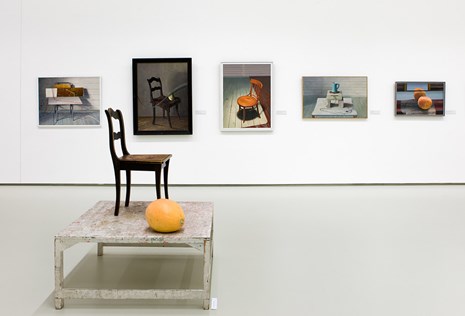Algimantas Švėgžda

Algimantas Švėgžda. Paintings. Graphics. Drawings
The year 2011 should be the year of Algimantas Švėgžda (1941-1996). He would have celebrated his 70th birthday on 22 April.
The outstanding personality of this notable artist, thinker and teacher may not have been forgotten, but its true importance has certainly not yet been fully appreciated.
Of the 55 years granted by fate to Švėgžda, he spent the last two decades literally struggling with death, constantly feeling the approach of the Grim Reaper. He underwent a kidney transplant in Berlin in 1982. Since then, he lived in GDR, but his thoughts always remained with his homeland. He had grand plans for Lithuanian, which left no place for compromise or conformity. He was concerned with the revamping of Kaunas' Liberty Boulevard and the fate of Vilnius' Žvėrynas area, a "national cultural memorial", and dreamt of a "single national park stretching in the capital from the National Gallery of Art to Vingis Park". After the restoration of Lithuania's independence, Švėgžda turned his thoughts to ecological social order and the ecological market economy, seeing it as "a balance between what is good for nature, what is good for mankind, and market itself regulates".
The range of Švėgžda's work is incredibly diverse: from large paintings done during his study years and immediately after them, to small drawings done during the dialysis treatment (when he would lie for hours on connected to medical equipment removing waste from his body). With his extraordinary will to create, and seeing himself primarily as a creator, he left a huge body of works from his "German period". Often barely able to get out of bed, he would draw whatever he could see through the window, or lying on a chair. Including in creative work each day ensured that his life had a meaning and a meditative quality.
The artist's early work remains a terra incognita to the general public and the younger generation of artists and critics. Large pieces done in the stile of Pop Art were often provocative in their youthful forwardness. This part of Švėgžda's legacy is just as valuable and worth exploring as the "German" one, which is better known to the public.
In this exhibition of the artist's work, viewers have a chance to see whole series To the Shepherds of Tibet and To the Natives of America for the first time, and to better understand the artist's ideas. His own writings serve this purpose as well.
The exhibition reveals Algimantas Švėgžda as one of the most prominent 20th-century Lithuanian artists: a painter, graphic artist, thinker, teacher and patriot. After the restoration of Lithuanian's independence, he donated hundreds of his most valuable works to Lithuanian museums: the Lithuanian Art Museum, the Museum of Vilnius Academy of Art, the M.K.Čiurlionos National Museum of Art, the Alka Museum in Telšiai, and the Aušra Museum in Šiauliai.
Curator of the exhibition Ramutė Rachlevičiūtė


